Question
Questions: Skim the case rather quickly to get an overview of the situation it presents. This quick overview should give you the general flavour of
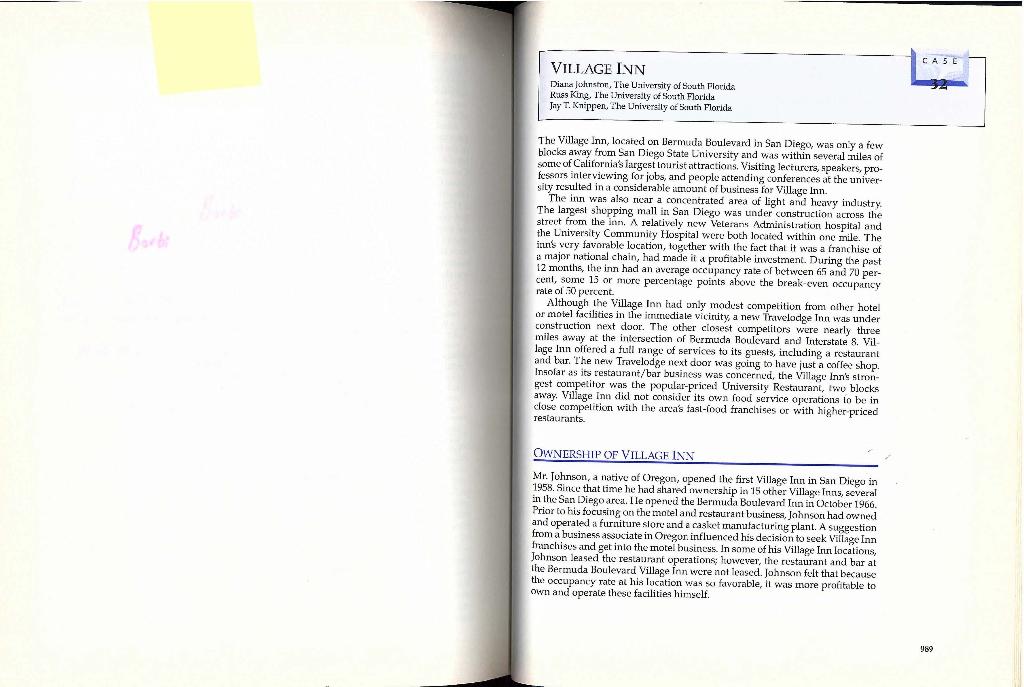
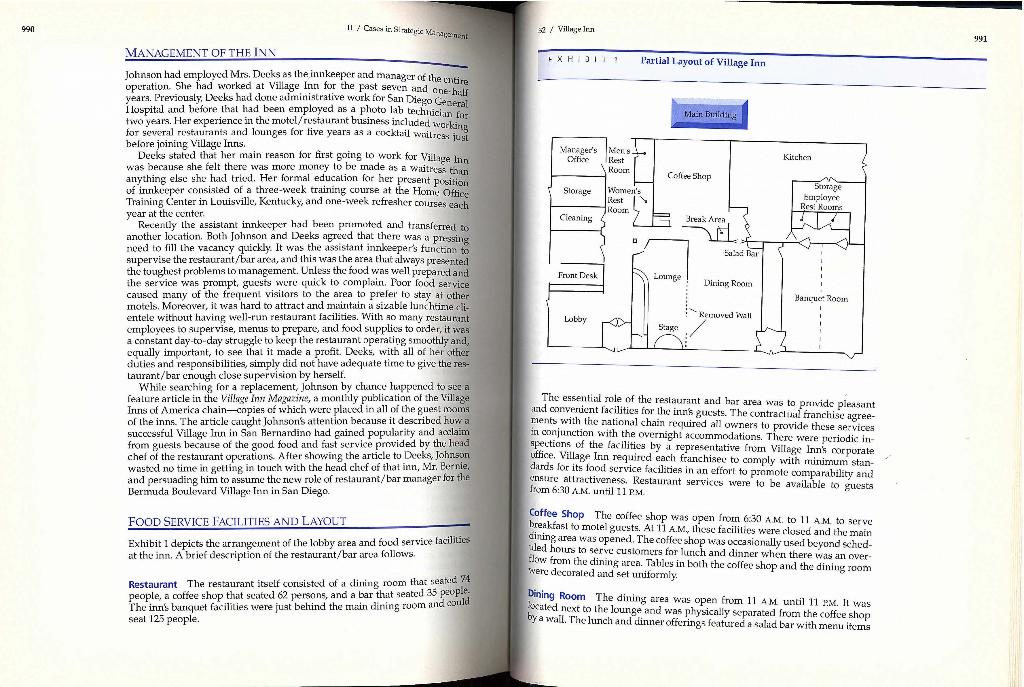
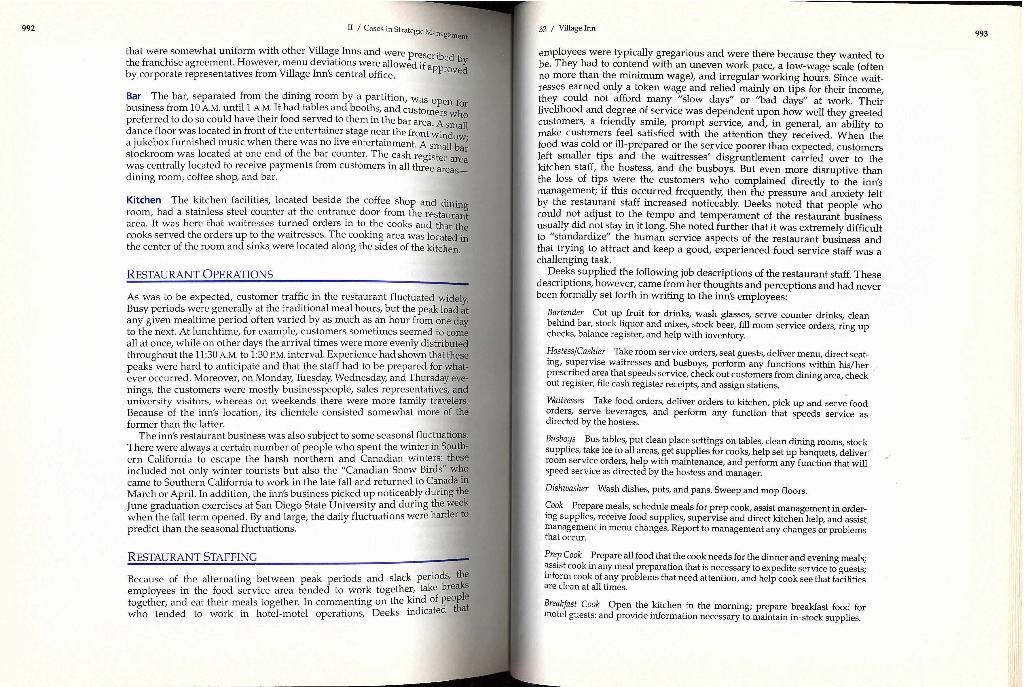
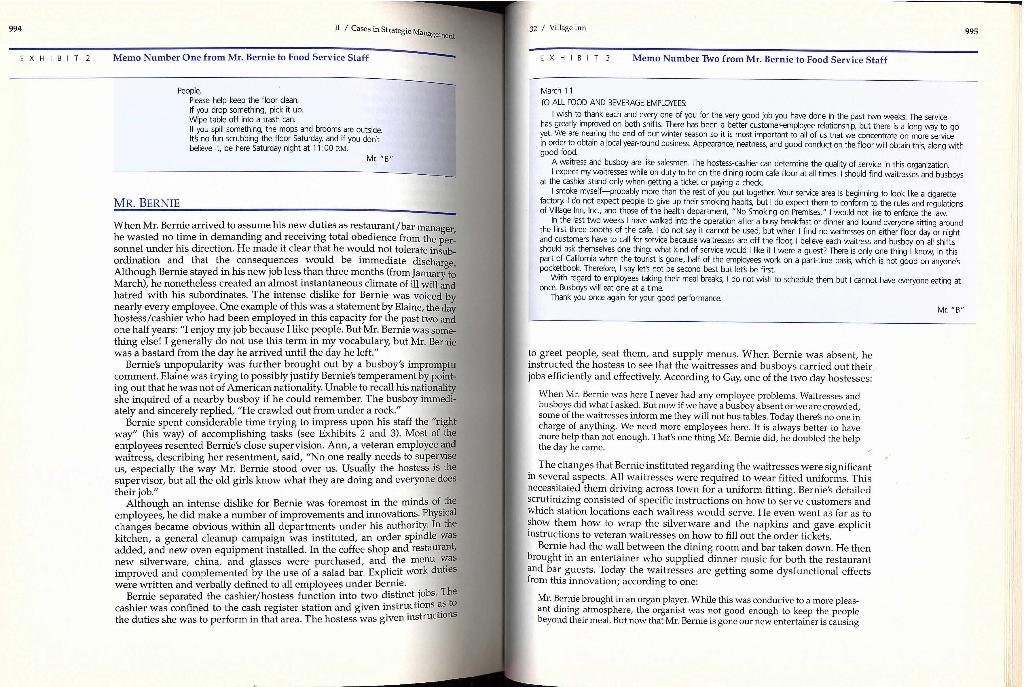
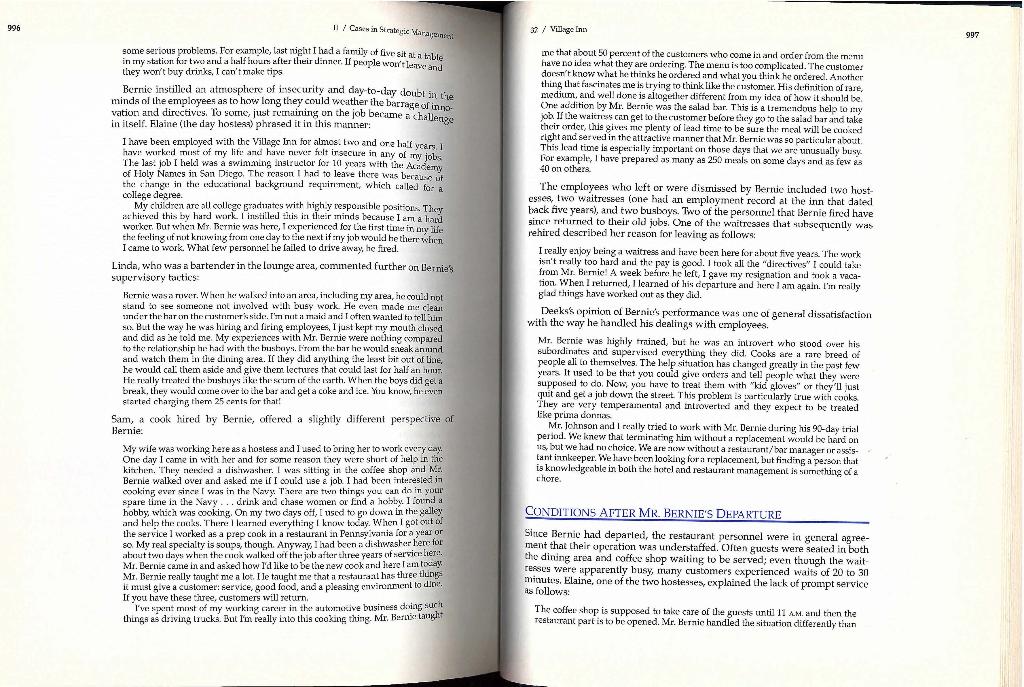

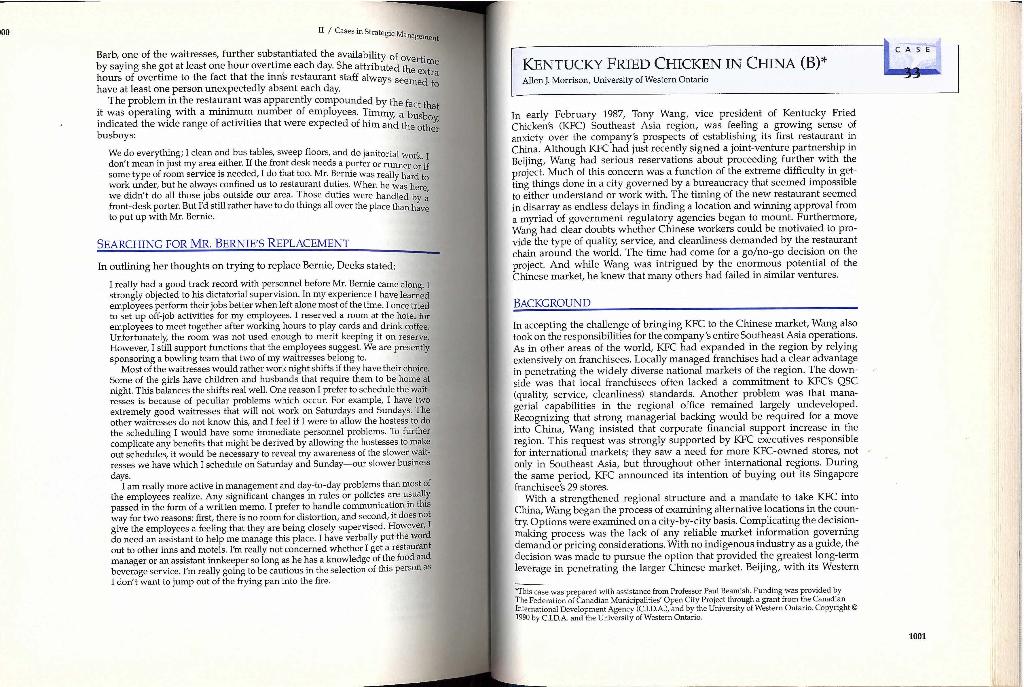
Questions:
Skim the case rather quickly to get an overview of the situation it presents.
This quick overview should give you the general flavour of the situation and indicate the kinds of issues and problems you will need to wrestle with.
Read the case thoroughly to digest the facts and circumstances.
Gain full command of the situation presented in the case.
Carefully review all the information presented in the exhibits.
Information in the exhibits is crucial enough to materially affect your diagnosis.
Decide on the strategic issues.
At times the strategic issues are clear. At other times, you will have to dig out the issues from all the given information.
Apply the concepts and techniques of strategic analysis you have been studying.
Apply concepts and analytical tools to cut beneath the surface and produce sharp insight and understanding.
Check out conflicting opinions and make some judgments about the validity of all the data and information provided.
Evaluate the data and information presented. Resolving conflicting information comes with the territory because a great many managerial situations entail opposing points of view, conflicting trends, and sketchy information.
Support your diagnosis and opinions with reasons and evidence.
Prepare answers that include all the reasons to support your diagnosis.
Develop an appropriate action plan and set of recommendations.
The final and most telling step in preparing a case is to develop an action agenda for management that lays out a set of specific recommendations. Explain your recommendations are more attractive than other courses of action
The Village In,located on Bermudia Boulevard in San Diego, was ony a few blocks anay frum San Diego State Lniversity and was within several ailes of some of California's largest tmurist attractions, Visiting lecrurers, speakers, professors inter viewing for jobs, and people attending conferences at the university resulted in a considerable amount of business for Village Inn. The inn was also near a concentrated area of light and heary industry. The largest shopping mall in San Diego was under construction across the strect from the inn. A relatively new Velerans Administration hospital and the Lniversity Communicy Hospital were both locaied within one mile. The inf very favorable location, together with the fact that it was a franchise of a) major nationd chain, had made it d protitable investment. During the past 12 months, the inn had an average oceupancy rate of hetwcen 6.5 and 70 percent, some 15 or more percentage points above the break-even occuparcy rate of, 30 perent. Although the Village Inn had only modest competition from other hotel or motel facilities in hhe immediale vicinity, a new Travelodge Inn was under construction next door. The other closest compelitors were nearly three miles awiy at the intersection of Bermuda Boukvard and Interstate 8. Village Inn offered a full range of services to its guests, including a restaurant and bar. lhe new Travelodge next door was going to have just a coifer shop. Infolar as its restaurant/bar business was concerned, the Villabe Inr's simngest competitor was the popular-pricell University Restaurant, twe blocks away, Village Inn did not onsidue its own food service operations to be in close compelition with the arcas tasl-inod franchises or with higher priced restaurants. OWNERSHIP OF VILLAGIF 1N Mr. Johnson, a native of Oregon, opened the first village Inn in San Diego in 1958. Sinke that time he had ahared monership in 15 other Village Inns, scveral in the San Diego area. Ile opened the Bermuda Boulevand Itun in Octaber 1966. Prior to bis focusing on the motel and restaurant business, Johnson had owned and operaled a furniture slore and a casket manulaciurine plant. A suggestion from a business assuciate in Oregor. influenced his decision to seek Village Inn franchises and get inla the motel business In some uf his Village In Locations, Johnson leased the restaurant operations: lwwever, the restaurant and bar at the Bermuda Houlevard Village Inn were nnt leased. Johnsan feIt that becausc the occupancy rate al his lucation was so favorable, it was more profitable to own and operate these facilities himsclf. Johnson had employed Mrs. Deeks as the innkeeper ind manager of the untire opuration. She had worked at village Inn for the past seven and one-haif years. Previously, Leeks had done administrative work for San Thiego Ceneral 1 lospital and hefore that had been employed as a photo lab technician for two years. Her experience in the motel/restaunant business included working for several rostaurants and lounges for tive years as a cocktisil wriilicas iust belore joining village Inusi. Deeks stated that her main reason for first going to work for Vilage lnn was because ahe felt there was more money to be made as a wilitress than anything else the had tried. Her formal education for her present position of irukeeper consisted of a three-meek training course at the Home Oftice Training Center in Louisville, Keutuck y, and one-iveek, refresher courses each year at the cexiter. Recently the assistant innkecper had been prumited and translerred to another location. Both Johnson and Deeks agreed that there was a pressing need to fill the vacancy quickly. It was the assistant innkeeper's function to supervise the restaurant/bar area, ind this was the area that always presented the tuughest problems to management. Unless the food was well preparst and the service was prompt, guests were quick to complain. Foor focd service caused many of the frequent visitors to the area to prefer to stay at other motels. Woreaver, it was hard to attract and mixitiuin ia sizable lunchtire chentele without having well-run restaurant facilities. With so many restaunant employees to supervise, menus to prepare, and food supplics to order, it was a constant day-to-day struggle to keep the restaurant operating smuothly and, equally important, to see that it made a profit. Doeks, with all of her ther duties and responsibilities, simply did not have adequate time to give the restaurant/bar enought close supervision by herself. While seanhing for a replacement, Johnsen by chunce lappencd to see a feature article in the Villege inn Mogaziti, a monthly publication of the tillage Inns of America chain-copies at which viere pliated in all of the guest inoms of the inns. The article caught Johnson's attention because it described huw a succsssful Villekge In in San Bernardino had gained popularity and aoslaim from guests because of the good food and fast service provided by the head chef of the restaurant operativens. After showing the article to Deeks, Johrson wastod no time in getling in touch with the head chef of that inn, MII. Bernie, and perquading him to assume the new role of restaurant/bar maniger for the Bermuda Boulevard Village. Itn in San Diego. The essential role of the restaurant and bar area was to prnvide plessant and converient facilities for the imn's gucsts. The contracl idil franchise agreements with the national chain required all owners to provide these se-vices in conjunction with the overnight accummodations. There were periodic inspections of the lacilities by i representative from Village Inn's norporate. uffice. Village Inn required each franchisee to comply with munimum standards for its food service facilities in an effort to promote comparability and? cnsure altractiveness. Restaurant jertices were to be available to guests from :30Ak. until I1 P:1. FOOD SIRVICE IACIIITISS AND LAYOLT Coffee Shop The coilec shop was open from 630 A.M. to 11 s. to serve breakfast to motel gucsts. At 11 A.M. lhese facilities were clused and the main Exhibit 1 depicts the arrangement of the lobby area and foud service facilities at the inn. A brief description of the restaurant/bar area follows. dining area was opened. The coffee shop was uccasionally userf teyond scheduled hous to gerve cusiomers for lumch and dinner when there was an overElow from the dining area. Tables in both the coffee shop and the dining room Restaurant The restaurant itself corsisted of a dining room that seated. 74 people, a coffee shop that scated 62 persons, and a bar that seated 35 people. The inns buuquet facilities were just behind the main dining room and oould seal 125 people. were decoraled and set uniformly. Dining Room The dining area was open frum 11Am until 11 s.M. It was bocated next to the lounge and was physically separated from the coffee shop by a wail. The lunch and dinner offering = featured a saliid bar with menu itcms that were somewhat uniform with other Village inns and were presce ibed by exployees were typically gregarious and were there because they wanted to the franchise agreement. Hosever, menu deviations were allowed if appoxwed be. They had to contend with an uneven work pace, a low-irage xale (often by morporate representatives from Village Inn's central office. no more than the minimum wage), and irregular working hours. Since waitBar The bar, separated from the dining room by a partition, was upen for fesses earned only a token wage and relied mainly on tips for their income, preferned to do so could have their food served to them in the bar erca. A smatl liwelihood and degree of service was dependent upon how well they greeled dance floor was boated in front of the entertaines stage near the [um small customerq, a friendly smile, prompt service, and, in general, an ability to a jukewox furnished music when there was no live encertainment make custumers feel satisficd with the attention they received. When the stockrom vas located at une end of the bar counter. The cast, A shall bar food was cold or ill-prepared or the service poorer that expected, customers the loss of tips were the customers who complained directly to the inn's management; if this occurred froquently, then the pressure and anxiety telt Kitchen The kitchen facilities, lncated beside the coffee shop and tining by the restaurant staff increased noticeably. Deeks noted that people who room, had a stainless steel counter at the critranee door from the restaurant could not adjust to the fempo and temperament of the restaurant business arca.Itwasherethatwaitresesturnedordersintothecooksatdthatthemoksservedtheordersuptothevaitresses.Thecookingareawasloratedinstandardize"thehumanserviceaspectsoftherestaurantbusinessandusullydidnotstayinitlong.Shenotedfurtherthatitwasextremelydifficult the center of the roum and sinks were located along the sides of the kitchen. thai trying to attract and keep a goud, experienced fuod service staff was a challeriging task. RESTALRANTOPFKAIIONS Deeks supplied the following job descriptions of the reataurant staff. These descriptions, however, came irom her thoughts and pereptions and had never been formally set forth in writing to the inn's employees:' Busy periods weec generally at the trasitional meal hours, but the peak load at any given mealtime period often varied by as much as an hour from one day to the next. At lunchtirs, fur uxamyle, custamers sometinics seemed to cone all at once, while on other dayc the arrival times were more evenily distributed throughout the 11:30 A.M. to 1:30 Ps: interval Expericnce had shown that these Feaks were hard to auticipate and that the staff had bo be prepared for whatever occurted. Moreover, on Monday, luesday, Wednesday, and I haraday enenings, the customers were mostly businesspeople, sales representatiwes, and university visiturs, whereas on weekends there were more family travelers. Because of the inn's location, its clientek consisted somewhat more of the furmer than the latier. The inn's reataurant businese was also subject to sume seasonsl fuctuetions. There were alwiys a certait number of people who spent the winter in 50u ern Califortia to cscape the harsh northern and Canidian winters: thuse included not only winter tourists but also the "Canadian Snow Binls" whe came to Southurr Califurnja to work in the late fall ard returned io Canilda in Nawh or April. In addition, ihe inn's busincss picked up noticeably during the June graduation excrciscs at Siat Diego Stale University and during the weck when the fall term opened. By and large, the daily fluctuations were iarder to predict than the seasonal fluctuations. Bariender Cut up fruit for drinks, Frash glasses, scrve counter drinks, dean behind bar, stnek liquor and mixem, stock beer, fill num scrvice orders, ting up checks, balance segister, and help with ieventury. HastessiCaakior Thke room ser vicx unders, seat guest, deliver menu, disect seating, supervise waiteesses and busboys, pertorm any functions within his/her prrscrited area that speedss service, check out rustomers from dining arch, check out regisier, file cash registe: reteipts, and assign staticns. Whitresses Take focd oriers, deliver orders to kitchen, pick up and serve food orders, serse beveriges, and perform any function that specds gervice as directed by the hostesz. Rushoys Bus tables, put cleen place scttings on lables, cleatan dining rooms, stock supplies, take ice to all arcens, get supplies for cooks, help set up hanquets, deliver room service orders, help with maintenance, datd perform any function that will speed service as cirected by the hasterss and manager. Dishusesine Wash dishes, pots. and pans. Sweep and mop toors. Coak Prepare meals, scheduk meals for prep cook, assist management in ordering supplices, receive food supplices, supervlse and direct kitchen leelp, and assist Managemeni in meru changes. Report to management any changes or probiems that orrur. RESTALRANT STAIIINC Prep Cook: Prepare all food that the coxok needs for the dinncr and evening meal r; employees in the food survice arti tended bo work togelher, lake breaks together, and eat their meals iogether. In commenting un the kind of peuple who lended to work in hocel-motel operations Deeks indicated that are chen at all times. Brmibeas! Cask Open the kitilen in the morning; prepare breaklast foxi: for notol gests; and provide irformaiun nexwsary to maintain in-stock supplies. Fropic Prase telp heed the bo dan If you crep soretires, pick it us Wre tabe alt rio a irst cen II you spil somethro the moos and broors are a, soe It ro firi writaing the fito salu say, and it you der: bediese ., ce rere Saturcay right at 11:00ak. yet. die ae reativg the and of ar vinter seasou so it is ruat impartant to al of us tist we concmrre on moie se viue n order to attar a local year-ound tisines. Amporonce, reatness, ald gond randkt on the floo wil cliaritis alsra with giocd ood as the castiks st ris crly when netting a ckke. cr pasing as trok. I sroke muse f-pu:aldy maxe than the rest of you pul bygticr. Wu.r sevize area is teginirg to koc the a doaretie MR. BERNIE When Mr, Berrue iarrived tol ansume his new dulies as restauranl/bar manager, he wasled no time in demanding and receiving total obedience from the personnel under his direction. He miade it clear that he would not tolerate insubordination and that the congequences would be immediate clischarge, A.though bernie stayed in his new job less than theee months (from January to March), he nonetheless created an almost instantaneous climate of ill will and laitred with his subordinates. 'lhe intense dislike for Bernie was voiced by nearly every employee. Cne example of this was a statement by Elaine, the day hostess/cashier who had been employed in this capacity for the past two ind one half years: "I enjoy my job bcciase Ilike prople. But Mr. Bernie was somethuing else! I generally do not use this term in my vocabulary, but kir. Ler dic was a bastard from the day he arrived until the day he lcft." shawd ask thensekes cone thing wht knd of service wcud I lke il I wem a glest? There is orly cre thing lnow in thi pockettock. Thereiue, I sing kts ro. se seconc bel bit leth be inst. th:e bestafs wil ar cre ot a trae Thark you urkex agan for your qood per omance comument. Flaine was irying ln possibly justity Bernie's temperament by poiat ing out that he was not of American nitionality: Unable to recall his nationality she incuired of at nearby busboy if he could remember. The busbor immediately and sincerely replied, "He crawled out frum under a rock." Brrnie spent cunsiderable time trying to impress upon his stalt the "rieht nay" (his way) of accomplishing taskse (see Exhibits 2 and 3. Moel at the enployees resented Bernies cluse supervision. Ann, a veleran employcc and waitress, describing her nesentment, said, "Ni one really needs to supervise us, eapecially the way Mr. Bernie stood over us. Usually the hostess is he supervisor, but all the olk girls know what they are doing and uveryore does their job." Although an intense dislike for Bernie was foremost in the minds of the employees, he did make a number of improvements and inumowationt Mhysica] changes became obvious within all departments under his authority. In the kitchen, a gencral cleanup campaign vvas instituted, an order spindle was added, and new ovan equipment installed. In the coffee shop and resta arant, new silverware, china, and glasscs wwere purchited, and the ments was improved and complemented by the use of a salad bar Explicit work duties were written and verbally definced to all employees under bernie. Berrue separated the cashier/hosless function into two distinct juks. The cashier was confined to the cash register station and given insiruxtions as to the duties she wis to perform in that area. The hostess was given instruceions When di.t Eurnie wns hore I never led any cmplogce problems. Waitresses, and iuseye did what [ asked. Buc nu if whave a busboy absent er we a re crowded, soune of the waitr'sses inform me they will nut hus tables. Today theres no one in charge of anylhing. We need more emplogees here. It is always better to have mure help than not enough. I luat's no thing Mr. Bernie did, he: dosablad the help the day lue cams: The changes that Broric institubed regarding the waitresses were significant in several zspects. All waitsesses were required to wear fitted uniforms. This necesgitaled them driving acmas town for a uniform fitting. Bernie's defails i scrutituizing consisted of specific itustructions on how lo ser ve customers and Which station locations each wail ress would serve. Ile even went as lar as to show them how to wrap the silverware and the napkirus and gave explicit instructions to veteran wailresses un how to fill out the order tickets. Bernie had the will between the dining room and bar taken down. He then brought in an enlertainer who supplied dinner music for buth the restauranl and bar guests. loday the waitresses are getting some dysfunctionial cffects Irom this innovalion; iscoroding to one: Sit. Berave brought in an argan plater. While this was oorducive to a more pleasant dining armosphere, the onganist was rot good enough to keep the prople beyoud their arteal. Hut now tha. Mr. Bernie is gore our rew entertainer is ceusizgg 996 Barb, one of the wait resses, further substantiated the avilanility of overtime by saying she got at least one huur are rlime each day. She attributed the extya hours of uvertime to the fact that the inns restaurant staff alvays seen:ed to have at least one person unexpectedly absent each day. The problcm in the restaurant was apparently compourded by the facc thst it wats operating with a minimurn number of employees. Timmy, a bustoy. indicated the wide range of actirities that were expecled of him and the other busbuyy: We do everything; 1 clenn and bss tables, sweep floon, and do janitorial mors. I don't mean in just my ared eilher. If the front desk necdis a purter or ruuncr or if some type of ronm gervice is ncoded, 1 du tilat tao Mr. Brrwie was realy hand to work under, but he olways cunfined us to reslauzant dulies. When. be was lere, we didr't do all thuse jubs oulside our ares. Those cuties were hardled by a trunt-desk porter. But I'd still rather have tudo thungs all over the place lian hiase to pul up with Mr. Bernic. SHARCIING FOR MR, BHRNIHS REPLACEMENT KENTUCKY FRIED CHICKEN IN CHINA (B) * Allen J. Morrisis, Universily of Wesicrn Ontario In early Februiary 1987, Tony Wang, vice presideni of Kentucky Fried Chicken's (KFC) Southeast Asia region, was feeling a growing stotse of anxicty over the company's prospects of cstablisking its first reataurant in China. Although KKC had just recently signed a joint-venture partnership in beijing, Wang had serious reservations about proccoding further with the project. Wuch of this concorn was a function of the extreme difficulty in get ting things done in a city governed by a bureaucracy that scemed impossible to fither undersland or work with. The timing of the new restaurant secmed in disarray as endless delays in finding a location and winning approval fmom a mrriad of guvernmeni regulatory agencies begon to mount. Furthermore, Wang had clear doubts whether Chinese workers could be motivaied to providle the type of quality, service, and cleanliness demanded by the restaurant chain around the world. The time had come for a goo-go decision on the project And while Wang was intrigued by the enormwus potenial of the Chincse market, he knew that many othurs had failed in aimilar ventures. I really hadd a gisul Lack record with persennel hefore Mr. Bernie canc! dong. 1 strongly objecled to his dictiturial supervision. In my experienae I have lesrred employees perform the ir jobs bet ier when left alone most of the time. I unce reed til set up oft-job activities for my cmployen. 1 reserved a nuur at the hole. hir eu.ployees to mect together after waeking hours to play cands and drink cotfee. Urtortunately, the room was not used enough to merit keping it on reserve. However, I sill support tunctions tilat the emplopees suggest. We are presierty sponsoring a bew ling tesan that two of my waitresses beiong to. Most or the wait esses would rather wors night shifts if they have their chrice. secme of the girls have children ind husbands that require theem to be home at night. This bolnness thu shifts real well. Ons reason I preter to schecule the wait meses: is because of pecullay problems waich orar. For example, I have two extremely good witreses tilat will not work on Saturdiys and sandays. Hie other waitrexses do not know this, and I feel if 1 were th allow the hostess to do the wileduling I would have some imaruerliste perannel polblens. To furiter complicate any le'refits that might be derived by allowing the hustesses to maken out schedalke, it would be necessary to reveal my awareness of the slower waitresses we have which I schedule on Saturday and Surday-ou slower busines days. 1 am nally muse active in managenent and day-ti-day probkrns than must ox the employecs realize. Ary significent changes in rules or pollctes ere usually passed in the furm of a writlen memo. I prefer to hizulle communitaton in this wiy tur two reagong: first, there is no roum for clistortion, and secoond, it does nixt glve the employess a forling that: they are being closely super wiscd. Howewer, T do recd an issistant io help me marage this plice. I have verbi ly put the vord cut to other ins and notels. 1'm reilly nut wncerned whether I ge a restiunart manager or al assistant innkeeper so long as he has a knowledge of the fuod nud beveroge servica. I'un realls going to be cautious in the selection of this persul a: 1 con't want to jump out of the frying per -nio the fire. took on the responsibilities for the company's cntire Southeast Asia operations. As in other areas of the vorld, KTC had expanded in the region by relying extensiwely on franchisess, Locally managed franchises had a clear advantage in penetrating the widely diverse mational markets of the region. The down side was that local franchisecs often lacked a commitment to KTC's QSC (quality service, cleanliness) slandards. Another problem was that managerial capabilitie: in the regional office remained largely undeveloped. Reoognizing that strong managerial backing would be required for a move into Chind, Wang insisted that corpuzate financial support increase in tiwe region. This request was strongly supported by KFC executives responsible for internationd markels, they saw a neved for more KFC-owned stores, not only in Southeast Asia, but thoughout other international regions. During the same period, KTC announced its intention of buying out is Singapere ftanchisces 29 stores. With a strengthened regional structure and a mamdate to take KFC. into China, Wing began the process of cxamining alter nalive locations in the country. Optinns were examined un a city-by-city basis. Comp-icatiry the decisinnraking process was the lack of any reliable market information governing demand or pricing, considerations. With no indigenous industry as is guide, the ducision was madc to pursue the option that provided the greatest long-term leverage in penetrating the larger Chincse miarket. Peijing, with its Western The Fade alien af andian Marisipel:ties Oyen Cily Propost through a grant tiven tee Calnd an 1990 ly CIDA smitie li thersily of Whatern Ontasiv
Step by Step Solution
There are 3 Steps involved in it
Step: 1

Get Instant Access to Expert-Tailored Solutions
See step-by-step solutions with expert insights and AI powered tools for academic success
Step: 2

Step: 3

Ace Your Homework with AI
Get the answers you need in no time with our AI-driven, step-by-step assistance
Get Started


